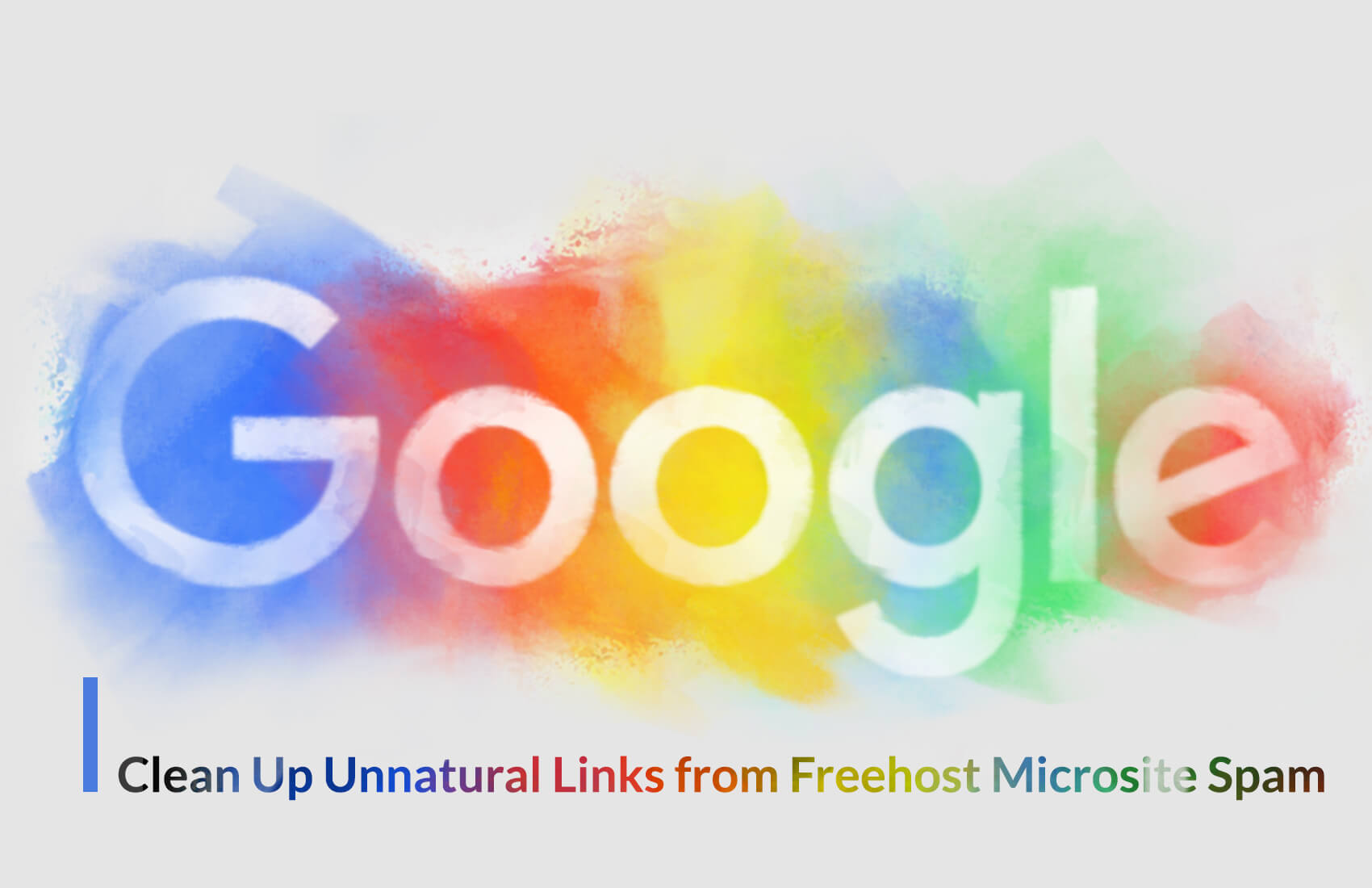How to Clean Up Unnatural Links from Freehost Microsite Spam
Google tightened the noose around spam back-links when it released the infamous Penguin update more than three years ago. The Penguin algorithm catches sites trying to manipulate higher rankings by buying incoming links, or by building them in an unnatural way, just to boost their SEO rankings. Successive Penguin updates have all but put an end to the practice of buying links from link exchanges or link farms, but free host microsite spam appears to be going largely unnoticed, at least for now.
Why Should You Clean Up Links From Spam Microsites?
Does this mean you don’t need to clean up, or (worse) should build more free host microsites and link back to your domain? Well, only if you want your site to disappear from Google searches when the next Penguin update hits. In all likelihood, the long-awaited update will be able to spot all free host microsite spam. And, if your site is hit, you may not be able to regain your ranking until the next update is released, provided that you’ve cleaned up the low-quality back-links coming in from spammy free host domains.
Just in case you were wondering, free host microsites are sites that anyone can build free on domains such as WordPress, Blogger, Weebly, etc. In the past, it used to be a somewhat legit SEO practice to create (at times) hundreds or thousands of these free host websites and publish what Google now considers thin content a blog post or two linking back to the important keywords on your website. Although the release of Penguin has stopped many businesses from continuing the practice, the links already built during pre-Penguin days still exist, and they can sometimes be tricky to find and weed out.
How to Find Free Host Microsites Spam Links?
Google also released a disavow tool along with the Penguin update. Using the disavow tool, you can tell Google which particular links or domains you do not want Google to consider for the purpose of ranking your website. Finding and disavowing backlinks is a two-step process:
Step-1: Download all links to your website
- Go to your site’s Dashboard, click Search Traffic >Links to Your Site
- Under who links the most, Click More, then click Download more sample links or Download latest links
- You’ll receive a file containing all the pages that link to your website. You’ll need to use this list to make a “.txt” list of the links that you want Google to ignore.
Step-2: Upload the text file to Google
- Go to the disavow tool and select your website
- Click Disavow links and upload your file
- The links will continue showing in the Search Traffic section but the Penguin will not take them into account when next time it pays your site a visit.
Manual Cleanup
Your site cleanup is not finished though. Google says: “You should still make every effort to clean up unnatural links pointing to your site. Simply disavowing them isn’t enough.”
Sounds like more work. Here’s are a couple of things you can do to get rid of spam incoming links forever.
1. Ask your SEO company to provide a list of the links they once built. If you are lucky to have your SEO around, your job becomes easy. Just log in to the microsite and delete the whole sites, or the links leading to your domain, as the case may be.
2. If you know (from your GA) the URLs linking to your site, you can report these domains as spam to their respective free hosts. Weebly is quite responsive about spam, whereas Blogger and WordPress allow you to report only one URL at a time.
Conclusion
So, should you go after spam links with a vengeance and root them out, or should you just disavow them and relax? The practical thing to do would be to get rid of as many spam backlinks as you can and disavow the rest of them. Then, you can keep your finger crossed for the next Penguin update is due sometime next year.








